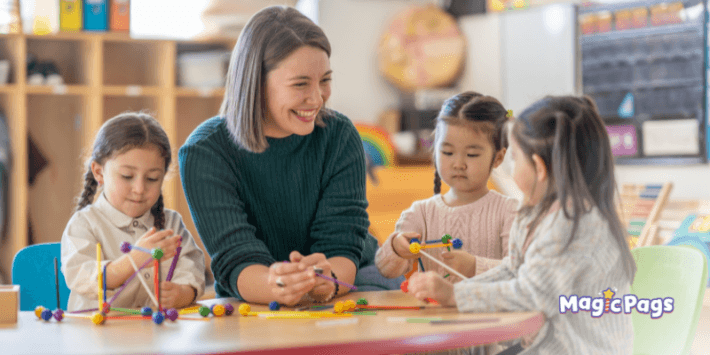Fun and Easy Math Activities for Preschoolers

Math starts early. Even before children can read, they are learning math. They count toys. They notice shapes. They sort their snacks by color. These are all simple math activities for preschoolers.
And they matter more than you might think.
Developmental Psychology shows that early math skills help children do better in school later on. Math is even more important than early reading when it comes to long-term learning success (Duncan et al., 2007).
The best part? Teaching math at this age doesn’t need to be hard. You don’t need worksheets. You don’t need special tools. Just playful time, some everyday objects, and a little creativity.
In this blog, we’ll share easy, fun, and hands-on preschool math activities you can do at home or in the classroom. These are perfect for parents, teachers, and anyone who wants to make early math part of everyday learning.
Let’s get started.
1. Measure It!
This activity helps children understand size, height, and length by comparing everyday things. It’s one of the simplest math activities for preschoolers, and you don’t need any special tools. Just use blocks, books, or even your child’s hands. Try asking, “How many blocks long is your teddy?” or “Which toy is taller?” You can even challenge them: “Can you find something shorter than your shoe?” These small questions help build math talk. According to the National Council of Teachers of Mathematics, using everyday words like longer, shorter, and taller builds stronger math understanding in young children. This kind of real-world comparison is a great first step into early math.
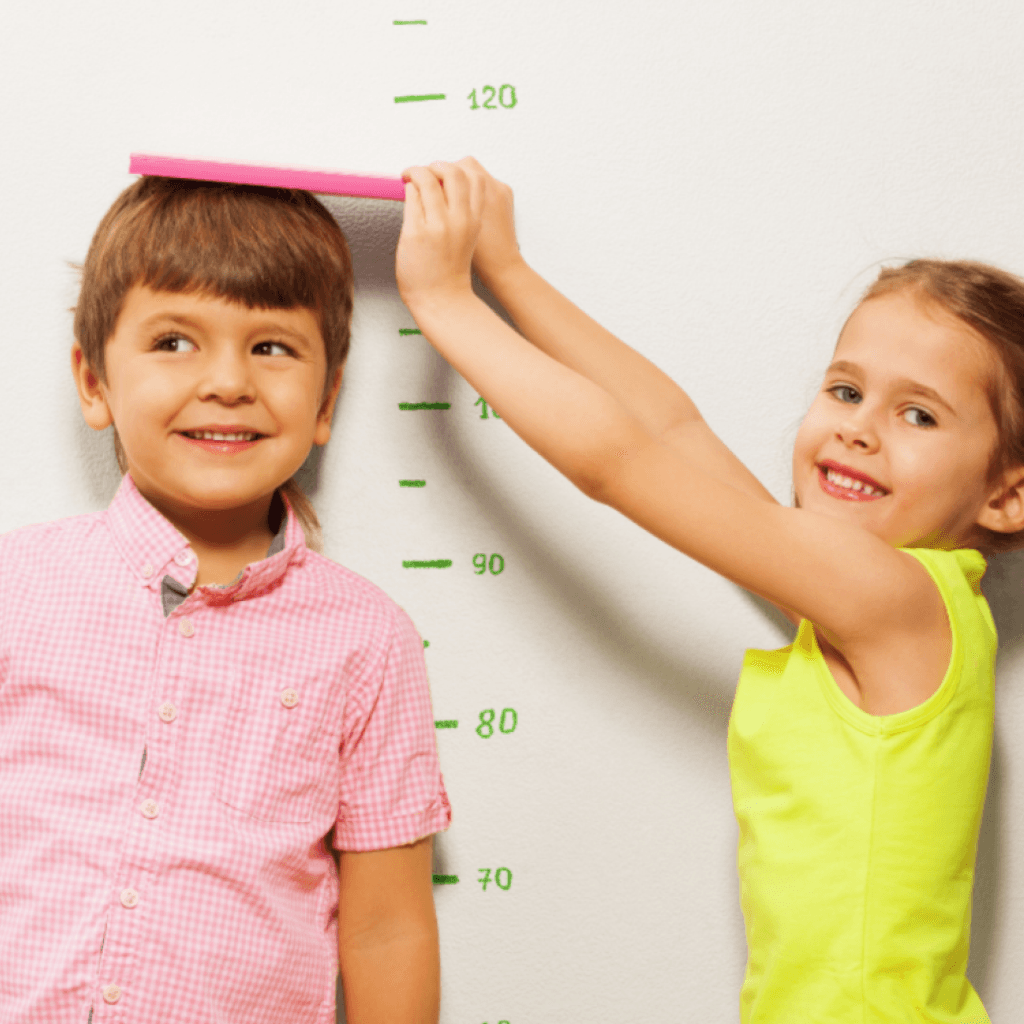
Educational Value:
- Math language: taller, shorter, longer
- Real-world thinking: using objects to measure
- Early comparison skills: seeing size differences
What You Need:
- Blocks or books
- A soft toy or shoe
- String or ribbon
Optional: ruler or tape measure
2. Pattern Play
Patterns are things that repeat like red-blue-red-blue. Children love spotting and making patterns. This activity helps them see order in the world. You can use toys, snacks, or colors. Start by making a simple pattern and saying it out loud. For example: “Red, blue, red, blue… what comes next?” Then let your child create their own. You can also use snacks and ask, “Can we make a pattern with grapes and crackers?” Patterns help children think ahead, make guesses, and feel the joy of solving little puzzles. This makes it a must-have in any set of preschool math activities.

Educational Value:
- Sequencing: understanding what comes next
- Visual thinking: spotting and creating patterns
- Early logic: building problem-solving skills
What You Need:
- Colored beads, buttons, or blocks
- Crayons or markers
- Paper or a flat surface
3. Playdough Math
Playdough isn’t just for fun it’s also a great tool for early math. Kids can roll it, shape it, and turn it into numbers, balls, or shapes. You might say, “Let’s make five little playdough balls. Now squish two. How many are left?” Or invite them to make a circle, a square, or even the number 3. These little moments turn play into learning. This activity is perfect for hands-on math activities at home or in the classroom. According to the National Association for the Education of Young Children (NAEYC), using materials like playdough helps young children understand numbers and math ideas in a way that feels real and fun.

Educational Value:
- Fine motor skills: building hand strength
- Counting practice: making and subtracting
- Shape recognition: forming basic shapes and numbers
What You Need:
- Playdough (store-bought or homemade)
- Shape cutters or lids
- A rolling pin or a bottle
4. Shape Hunt
Shapes are all around us on signs, in books, even in snacks. A shape hunt is a fun way to help children spot and name shapes in their world. Walk around the house or classroom and say things like, “Can you find something that’s a circle?” or “Let’s look for three squares.” You can make a simple checklist or just explore together. This activity builds real-world connections. According to the National Council of Teachers of Mathematics, learning to name and recognize shapes helps children understand space, position, and geometry key parts of early math and kindergarten math activities.
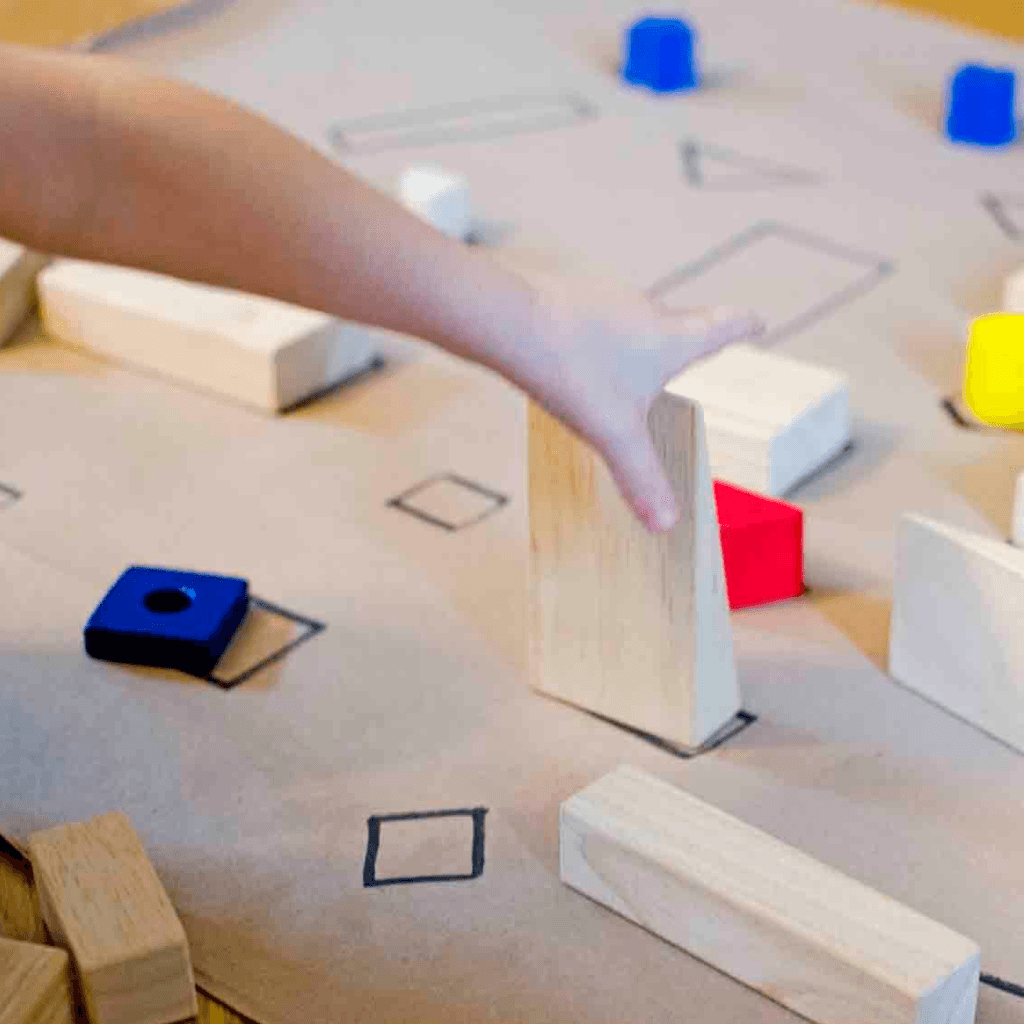
Educational Value:
- Shape recognition: finding and naming basic shapes
- Visual awareness: noticing details in the environment
- Spatial skills: understanding space and position
What You Need:
- A simple shape chart (circle, square, triangle, rectangle)
- A small basket or bag (optional)
- Everyday objects
5. Build with Blocks
Building with blocks is fun, but it’s also full of math. Children learn about size, shape, balance, and counting without even realizing it. Try saying, “Let’s build a tower with five blocks,” or “Can you make one taller than this one?” You can also sort blocks by color or size before building. Block play is great for both quiet time and group play. According to the Erikson Institute, block activities support early math learning by helping children think about numbers, patterns, and space. That’s why they’re a great part of any preschool math center or kindergarten activity.

Educational Value:
- Counting and comparing: adding and comparing block sizes
- Spatial thinking: building and balancing
- Sorting skills: grouping by color, shape, or size
What You Need:
- Blocks, LEGO, or stacking toys
- A table or open space
6. Puzzle Time
Puzzles are more than just quiet play, they’re great for building thinking skills. When children put puzzle pieces together, they learn to look closely, match shapes, and solve problems. You can use regular puzzles or make your own by cutting a picture into a few pieces. Try saying, “Where does this piece go?” or “Can we find the piece with the corner?” According to the Journal of Developmental Psychology, puzzle play supports early spatial skills, which are strongly linked to later math success. That makes this a smart and fun preschool activity for any day.
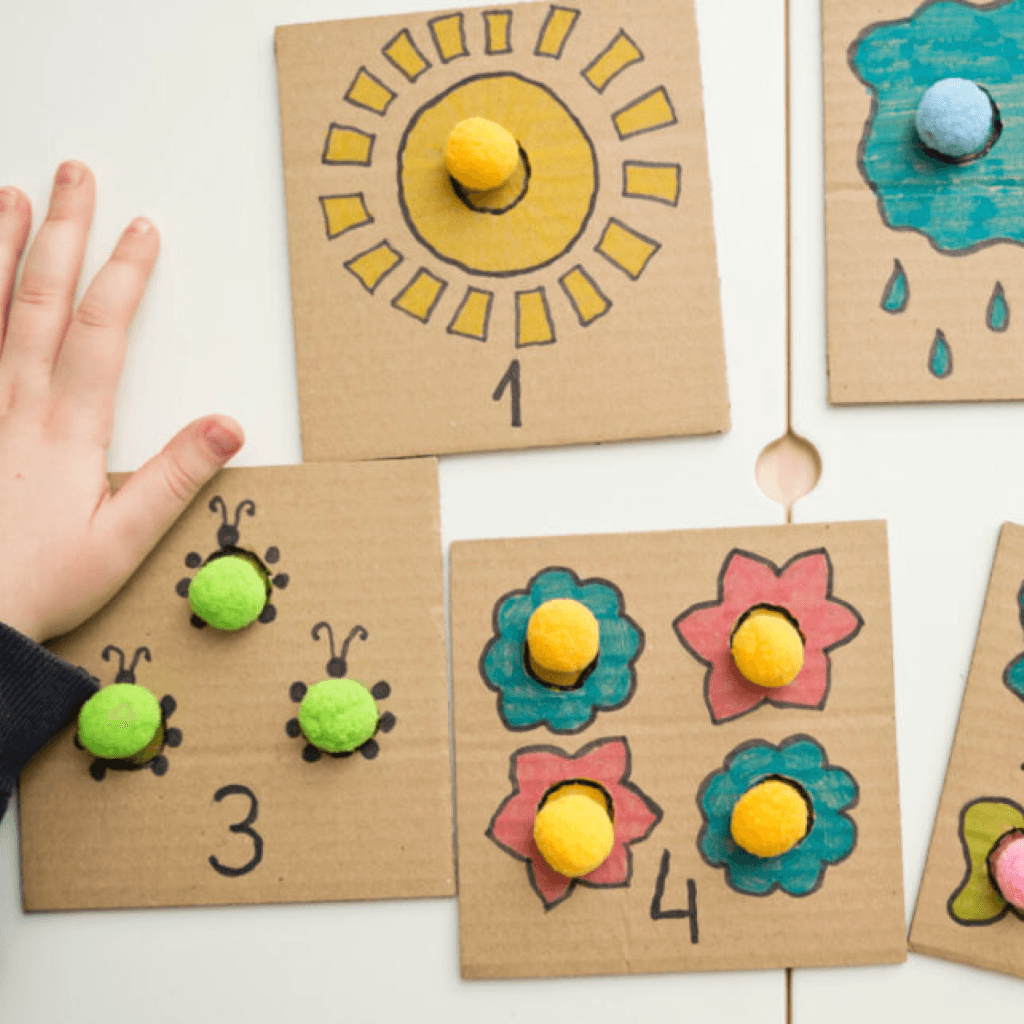
Educational Value:
- Problem-solving: figuring out how pieces fit
- Shape awareness: matching curves, edges, and corners
- Focus and patience: staying with a task to finish it
What You Need:
- Jigsaw puzzles (store-bought or homemade)
- Printed pictures you can cut into pieces
- Floor or table space
7. Count and Sort
Sorting is a great way to help children see how things are the same or different. It’s simple, but it teaches big math ideas. Ask your child to sort toys by color, size, or shape. Then count how many are in each group. You might say, “Let’s put all the red blocks here. How many do we have?” or “Can we find the biggest ones?” This type of sorting builds early logic and number sense. According to the National Association for the Education of Young Children (NAEYC), sorting and classifying are key early math skills that help children with counting and comparing in later years.
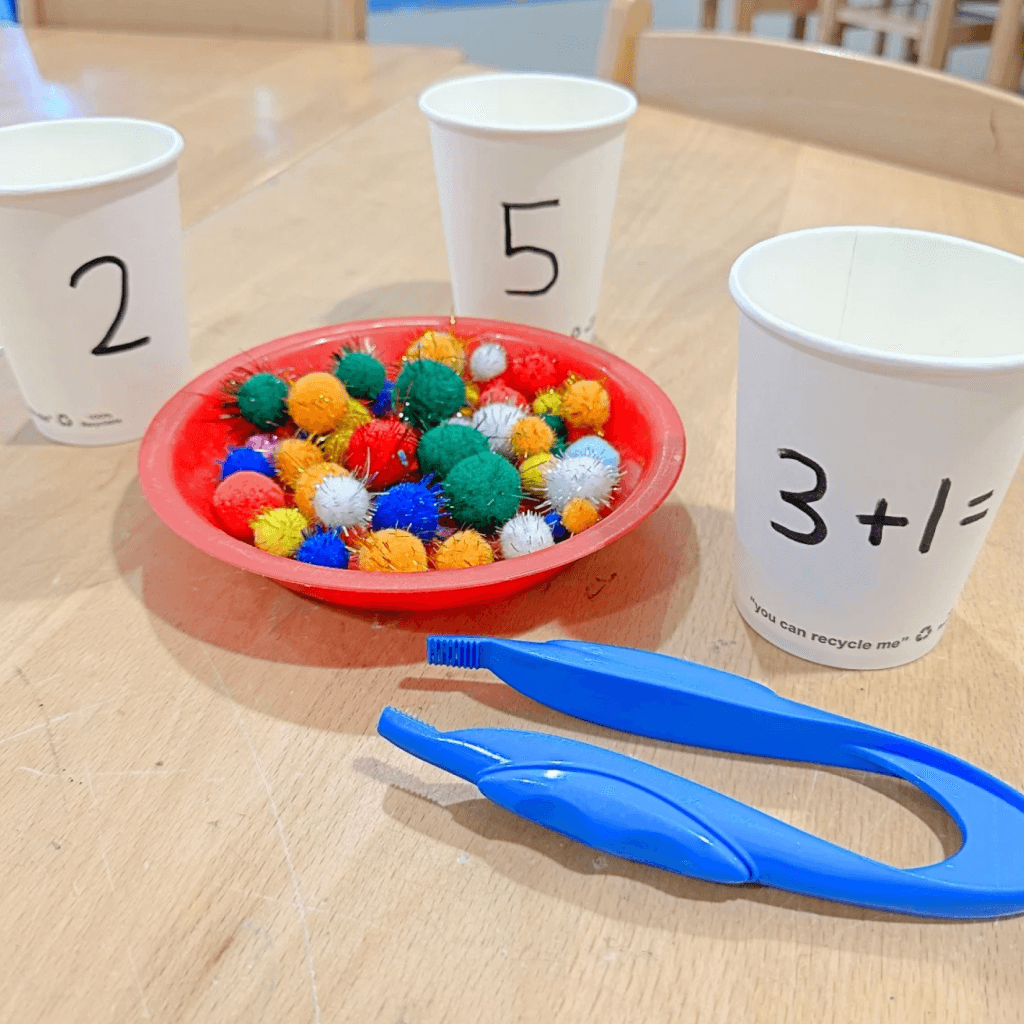
Educational Value:
- Sorting and classifying: grouping by color, size, or shape
- Counting: adding up each group
- Logical thinking: spotting patterns and differences
What You Need:
- Colored buttons, toy animals, blocks, or snacks
- Muffin tin, cups, or bowls
8. Count Real Things
Real-life counting makes math meaningful. Children understand numbers better when they can touch, see, and move the things they count. Use snacks, toys, fingers, whatever is around. Try saying, “You have 3 crackers. I’ll give you 2 more. How many now?” or “Let’s count how many steps to the kitchen.” These moments turn everyday routines into learning time. Research from the National Early Childhood Technical Assistance Center shows that using real objects in learning helps children connect math to their daily lives, making it easier for them to remember and understand.
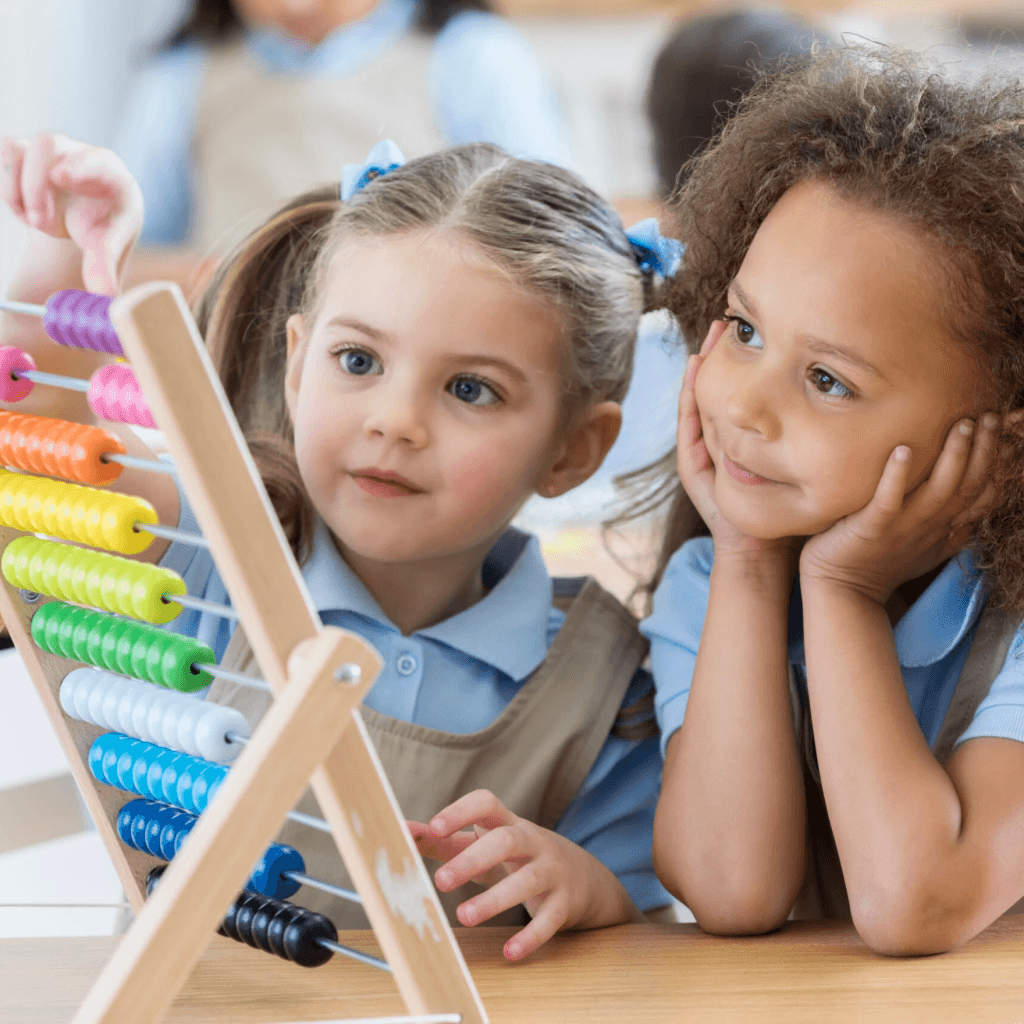
Educational Value:
- Number sense: understanding what numbers really mean
- Early addition and subtraction: using real examples
- Everyday math: connecting learning to daily life
What You Need:
- Snacks (like crackers or fruit pieces)
- Small toys
- Fingers, toes, or household items
Final Thoughts
Math learning doesn’t need to happen at a desk. As you’ve seen, it often begins with everyday play, counting snacks, sorting toys, or spotting shapes during story time. These simple activities build confidence, curiosity, and strong early math skills.
But there’s another powerful way to support learning: interactive storytelling.
That’s exactly what Magic Pags offers.
Magic Pags is a growing digital library of interactive read-aloud books that help children explore big ideas in Science, Technology, Engineering, Art, and Math (STEAM). These books are designed for young minds, with friendly narration and rich visuals to keep children engaged while they learn.
And for parents and teachers? Magic Pags includes a smart parental dashboard so you can track your child’s progress and reading habits all in a clean, ad-free space built just for early learners.
Here’s how Magic Pags supports STEAM learning:
- Stories that naturally explore math, science, and creativity
- Narration that builds reading skills and comprehension
- A safe, screen-time option that connects to real learning goals
- A clear dashboard that gives you insights into your child’s growth
If you’re a parent or teacher looking to support STEAM education in a fun and meaningful way, Magic Pags is the perfect place to start.
Because when children enjoy stories, they also discover ideas. And with the right stories, even math becomes something they love. Start a free trial!



